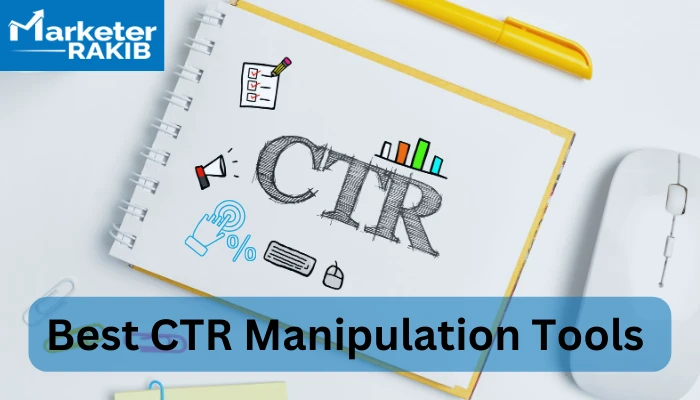Achieve One-upmanship Online with Innovative LinkDaddy CTR Manipulation Methods
Wiki Article
Boosting Sales With Strategic CTR Manipulation
In the competitive landscape of electronic advertising and marketing, comprehending the subtleties of click-through rates (CTR) is necessary for driving sales. Strategic control of CTR can lead to raised user engagement and conversion rates, eventually benefiting the bottom line.Recognizing Click-Through Rate
 Click-through rate (CTR) offers as a crucial metric in examining the effectiveness of electronic advertising and marketing projects. It represents the ratio of individuals who click a certain link to the complete variety of users who view a page, email, or ad . Shared as a percent, CTR offers useful understandings into target market involvement and the significance of the material being advertised.
Click-through rate (CTR) offers as a crucial metric in examining the effectiveness of electronic advertising and marketing projects. It represents the ratio of individuals who click a certain link to the complete variety of users who view a page, email, or ad . Shared as a percent, CTR offers useful understandings into target market involvement and the significance of the material being advertised.A high CTR suggests that the material resonates well with the target market, motivating them to act. Alternatively, a reduced CTR might indicate that the project is misaligned with user assumptions or that the phone call to action is inefficient. Numerous factors can affect CTR, including the quality of the ad duplicate, the beauty of visuals, and the positioning of web links within the web content.
Recognizing CTR is necessary for marketers looking for to enhance their projects. By examining CTR data, services can determine which techniques are working and which require modification. This continuous analysis assists fine-tune targeting, enhance material relevance, and eventually boost the total individual experience. As a fundamental metric, CTR plays an important role in the repetitive process of electronic marketing, paving the way for much more efficient methods and much better interaction with possible clients.
Value of CTR in Sales
A strong click-through price straight associates with sales performance, highlighting its value in the sales channel. CTR works as a vital indicator of how effectively an advertising campaign converts prospective clients' rate of interest into workable steps. A high CTR symbolizes that your audience discovers your messaging compelling, which is vital for driving website traffic to your sales pages.Moreover, an elevated CTR can improve brand name visibility and authority. When possible consumers involve with your e-mails or ads, it promotes an impression of trust and relevance, developing your brand name as a go-to service on the market. This can bring about enhanced client loyalty and repeat acquisitions, even more boosting sales figures.
Furthermore, a robust CTR can positively impact online search engine positions and advertisement placement costs. Greater interaction rates indicate to online search engine and advertising and marketing systems that your content is useful, allowing you to take advantage of much better positioning and potentially reduced costs for clicks.
Strategies for Reliable CTR Adjustment
Efficient adjustment of click-through rates (CTR) includes a tactical mix of engaging web content, targeted target market interaction, and data-driven optimization methods. A well-structured headline not only stimulates rate of interest however also encourages users to click via.Next, utilizing high-quality visuals can additionally boost CTR. Furthermore, making use of clear and convincing calls-to-action (CTAs) can assist customers toward the desired activity.
 Segmenting your audience is another vital method. CTR Manipulation Press Release. Customizing material and uses to details demographics makes certain that the messaging reverberates more deeply, enhancing the probability of clicks. A/B testing various aspects, such as photos, headlines, and ctas, also supplies useful understandings right into what drives greater CTR
Segmenting your audience is another vital method. CTR Manipulation Press Release. Customizing material and uses to details demographics makes certain that the messaging reverberates more deeply, enhancing the probability of clicks. A/B testing various aspects, such as photos, headlines, and ctas, also supplies useful understandings right into what drives greater CTRAnalyzing Customer Behavior
Comprehending user behavior is critical for optimizing click-through rates and boosting total advertising and marketing strategies. By assessing how customers engage with material, online marketers can identify patterns, choices, and pain points that significantly influence engagement. This evaluation entails checking out metrics such as time invested on web page, scrolling habits, and click paths to determine what resonates with the target market.Segmentation is crucial in recognizing user straight from the source behavior, as different demographics exhibit unique propensities. As an example, younger individuals might gravitate towards aesthetically abundant material, whereas older target markets might like straightforward and clear messaging. A/B screening can further improve understandings by contrasting variants in layout, messaging, and call-to-action aspects, enabling marketers to recognize which choices produce higher engagement rates.
Moreover, keeping an eye on individual comments with studies and social media sites can provide qualitative data that improves quantitative findings. Comprehending the psychological triggers that drive individual decisions is just as crucial; leveraging this expertise enables the development of engaging material that encourages clicks.
 Ultimately, an extensive analysis of customer habits not only aids in boosting click-through rates but likewise educates wider advertising and marketing methods, making sure that campaigns are tailored to satisfy the progressing requirements of the target market.
Ultimately, an extensive analysis of customer habits not only aids in boosting click-through rates but likewise educates wider advertising and marketing methods, making sure that campaigns are tailored to satisfy the progressing requirements of the target market.Determining CTR Success
Gauging the success of click-through prices (CTR) needs an organized method that improves understandings gained from individual habits analysis. To efficiently assess CTR performance, businesses need to establish clear objectives that straighten with their overall advertising and marketing goals. This framework makes it possible for companies to track progress in time and make enlightened adjustments.Secret performance indicators (KPIs) need to be specified, including target CTR portions based on industry criteria. Normal surveillance of these metrics is essential, as it enables the identification of abnormalities and click this link patterns. By segmenting data according to demographics, device kinds, and interaction levels, organizations can determine which sectors carry out best and tailor their techniques appropriately.
A/B testing presents another valuable tool in measuring CTR success. By try out different advertisement layouts, headings, and contacts us to action, organizations can determine one of the most effective mixes that reverberate with their target audience. Moreover, evaluating the correlation in between CTR and conversion rates gives much deeper understandings into the performance of advertising initiatives.
Eventually, a comprehensive strategy to gauging CTR success not only improves project performance yet likewise educates future techniques, driving continual service development and enhanced customer engagement.
Final Thought
Finally, strategic adjustment of click-through prices (CTR) acts as a vital component in enhancing sales performance. By executing efficient methods such as compelling headings, top notch visuals, and targeted messaging, organizations can significantly enhance individual engagement and drive conversions. Continual analysis of individual behavior and dimension of CTR success promote continuous optimization of advertising and marketing approaches. Inevitably, a focus on CTR not just enhances immediate sales however likewise contributes to long-term customer commitment and brand authority.Strategic control of CTR more info here can lead to raised customer involvement and conversion prices, inevitably benefiting the bottom line. Alternatively, a low CTR might signify that the campaign is misaligned with customer expectations or that the call to action is inadequate.Effective manipulation of click-through rates (CTR) includes a strategic blend of engaging content, targeted target market engagement, and data-driven optimization methods.Measuring the success of click-through prices (CTR) calls for an organized technique that constructs on insights obtained from customer behavior analysis. Constant analysis of individual habits and dimension of CTR success assist in continuous optimization of marketing techniques.
Report this wiki page